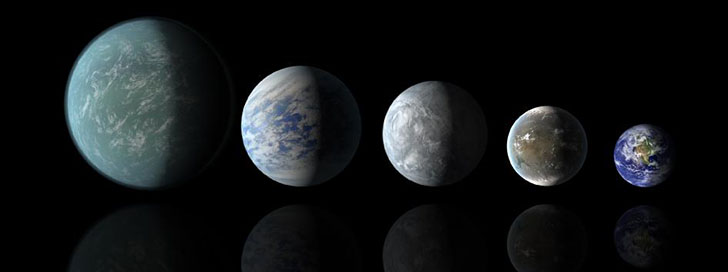
NASA's Kepler mission has discovered two new planetary systems that include three super-Earth-size planets in the habitable zone, the range of distance from a star where the surface temperature of an orbiting planet might be suitable for liquid water.
Announced December 24, 2015, scientists who have studied the interior of super-Earths have conjectured that they may contain compounds that not explained by classical rules of chemistry, exotic substances that may increase the heat transfer rate and strengthen the magnetic field on these planets.
The authors of the paper are a group of researchers from MIPT led by Artem Oganov, a professor of the Skolkovo Institute of Science and Technology and the head of the MIPT Laboratory of Computer Design. In a previous study, Oganov and his colleagues used an algorithm created by Oganov called USPEX to identify new compounds of sodium and chlorine, as well as other exotic substances.
In their latest paper, the researchers attempted to find out which compounds may be formed by silicon, oxygen, and magnesium at high pressures.
The results of the computer modelling show that the interior of these planets may contain the exotic compounds MgSi3O12 and MgSiO6. They have many more oxygen atoms than the MgSiO3 on Earth. The high conductivity of these substances could mean a more powerful magnetic field. In turn, a more powerful magnetic field means more powerful protection from cosmic radiation, and consequently more favourable conditions for living organisms. The researchers also predicted new magnesium and silicon oxides that do not fit in with the rules of classical chemistry -- SiO, SiO3, and MgO3, in addition to the oxides MgO2 and Mg3O2 at lower pressures.